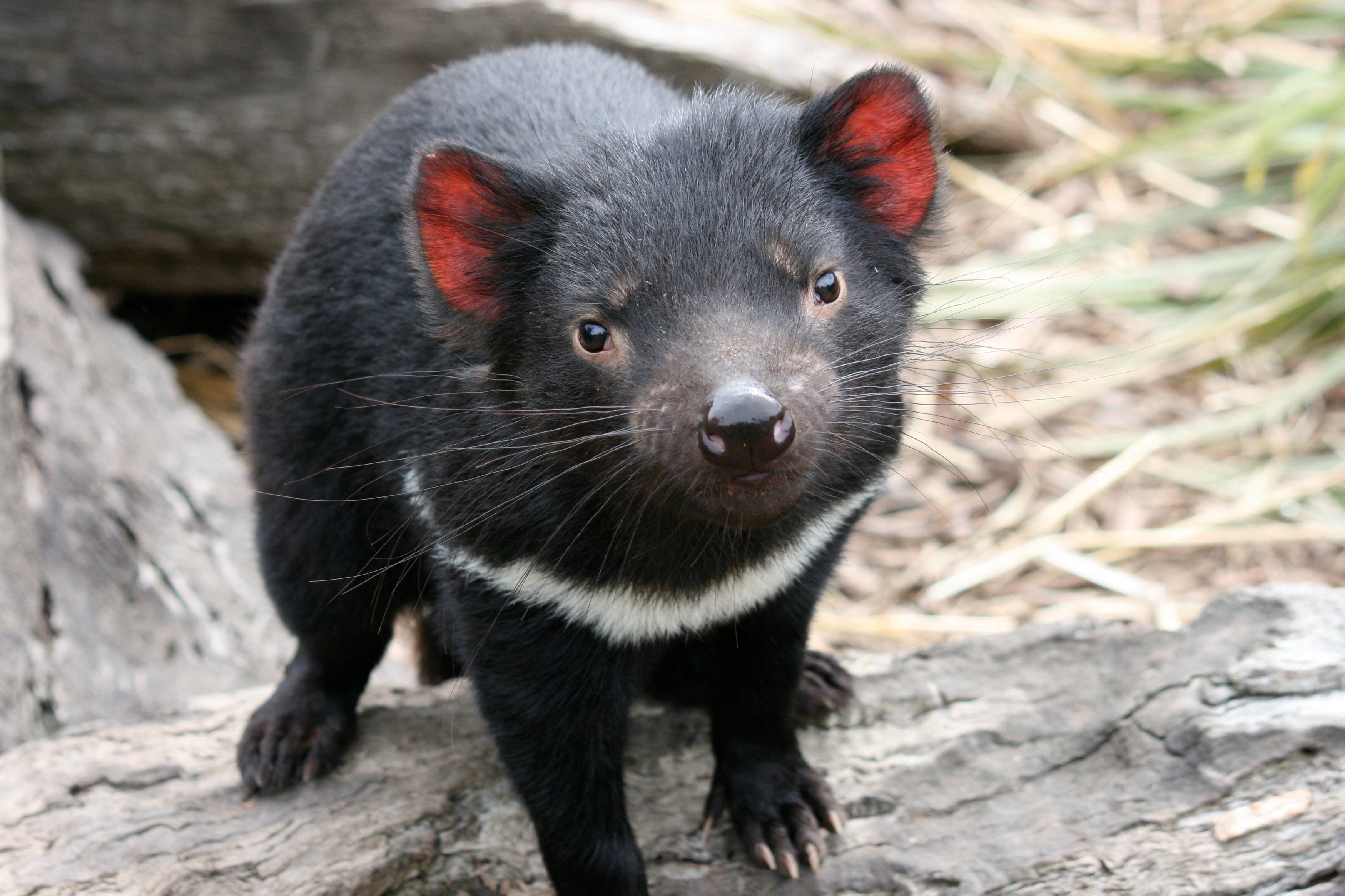
(Vienna, 03-11-2025) Facial tumours in Tasmanian devils are among the few known cases of transmissible cancer. Researchers at the University of Veterinary Medicine, Vienna and the Medical University of Vienna have identified molecular signalling pathways in both variants of this disease that are crucial for the survival and growth of cancer cells. These signalling pathways could be specifically interrupted by drugs, but the cancer cells show a remarkable ability to develop resistance. These findings, published in the journal "The EMBO Journal", provide important insights into the understanding of resistance mechanisms that also play a central role in human tumours.
For years, the population of Tasmanian devils, marsupial predators that live exclusively on the Australian island of Tasmania, has been decimated by a mysterious plague: transmissible facial tumours. Two different types of cancer – "Devil Facial Tumour 1" (DFT1) and ‘Devil Facial Tumour 2’ (DFT2) – spread from animal to animal, similar to an infection. This rare phenomenon offers scientists an extraordinary opportunity to understand how cancer cells survive, adapt and manipulate their host organism. "The fact that cancer cells can spread like an infectious agent is extremely rare and requires extraordinary abilities," explains lead author Anna Schönbichler from Vetmeduni. "This is precisely why Tasmanian devil tumours are ideal for understanding what makes cancer cells so resistant and adaptable and how they develop metastases – and for deriving new therapeutic approaches from this."
Several years ago, the Vienna-based research team discovered that DFT1 cancer cells depend on certain receptors that normally control cell growth. At that time, it became apparent that this dependency contributes to the cancer not being recognised and rejected by the immune system. In their current study, published in the renowned journal The EMBO Journal, the group built on these findings and compared the two transmissible cancer variants DFT1 and DFT2. Although both originate from the same cell type – peripheral nerve cells, known as Schwann cells – they use different signalling pathways to survive and multiply in their host's body. "We were able to show that many molecular switches that are active in DFT1 are not activated in DFT2 and vice versa. These differences open up specific targets for combating transmissible cancer in Tasmanian devils," explains Andreas Bergthaler from MedUni Vienna, one of the study leaders.
Using modern screening techniques, the team identified several active substances that can interrupt these signalling pathways; in preclinical tests, this led to a significant reduction in tumour burden. However, as with human cancers, the cells soon developed resistance and found ways to circumvent the treatment. Interestingly, the resistance developed also differs between DFT1 and DFT2. DFT2, the tumour discovered later, takes longer to become resistant and changes in such a way that it increasingly resembles DFT1. In nature, too, DFT2 develops similar mechanisms over time to camouflage itself from the immune system.
The project impressively demonstrates how comparative cancer research across species boundaries can yield new insights. "Our goal is not only to contribute to saving the Tasmanian devil," summarises study leader Richard Moriggl from Paris Lodron University. "In particular, we want to better understand the universal principles of how cancer cells assert themselves and hide from the immune system. A deeper molecular understanding thus also supports the development of new therapeutic approaches for animals and humans in line with the One Health approach."
Publication: The EMBO Journal
Tyrosine kinase targeting uncovers oncogenic pathway plasticity in Tasmanian devil transmissible cancers
Anna Schönbichler, Anna Orlova, Carmen Kreindl, Lukas Endler, Richard Wilson, Lindsay Kosack, Anna Hofmann, Csilla Viczenczova, Jocelyn Darby, Fettah Erdogan, Amanda L Patchett, Anna Koren, Stefan Kubicek, Mathias Müller, Andrew S Flies, Andreas Bergthaler and Richard Moriggl
https://doi.org/10.1038/s44318-025-00603-0